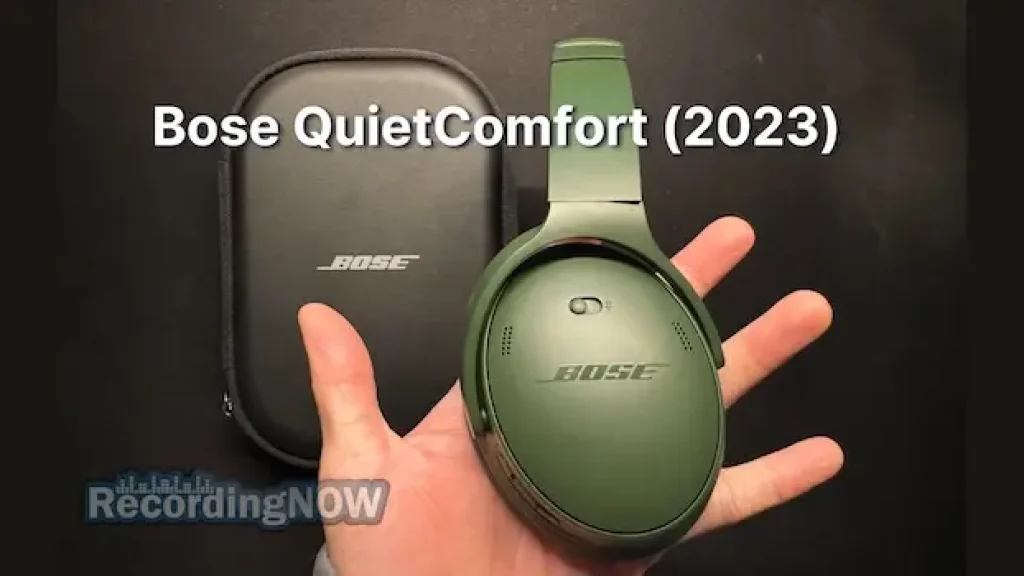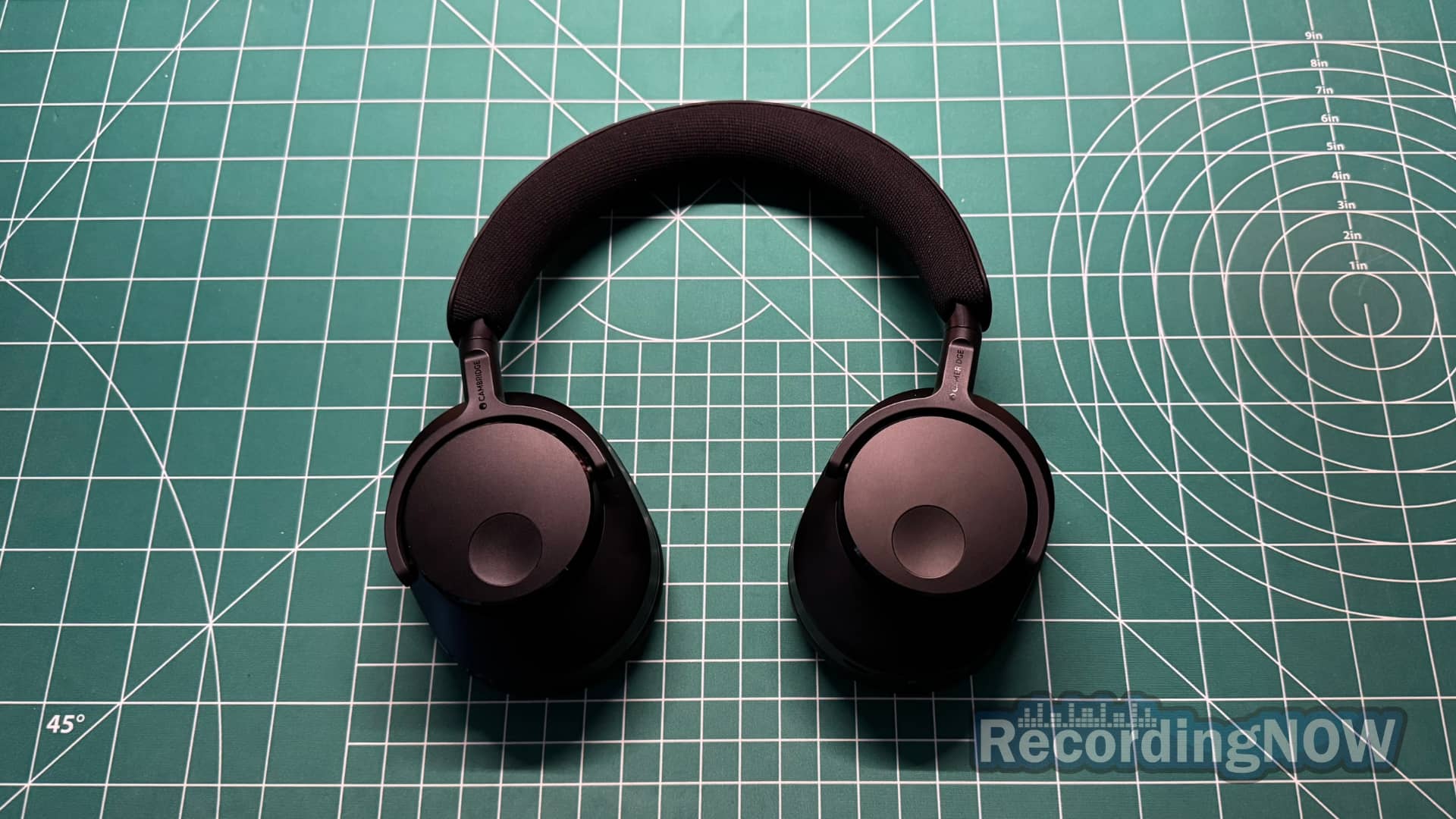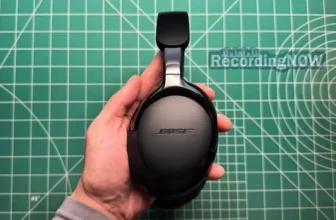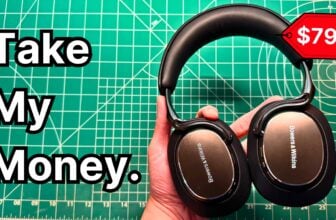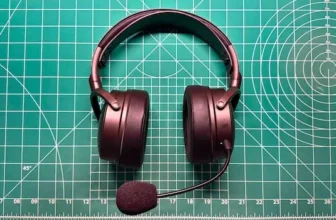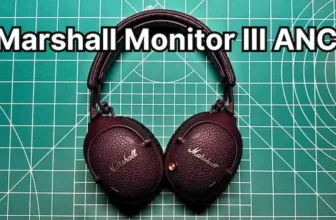In this article, I’m going to share my HONEST Cambridge Audio Melomania P100 SE review for those who are wondering whether they are WORTH IT in 2025. I’ll also be comparing the Cambridge Audio Melomania P100 SE vs P100, Sony WH-1000XM6, Bowers and Wilkins Px7 S3, Px8, Apple AirPods Max, Bose QuietComfort Ultra, Sennheiser Momentum 4, and more!
I’m going to do my best to share whether these headphones are worth it, and ideally who these headphones are for. I’ve owned these headphones for a while now and have quite a few thoughts.
I’ll be sharing my critical opinion with 10 years of experience as a professional music producer, audio engineer, and tech journalist.
Let’s dive right in!
Cambridge Audio Melomania P100 SE review in short
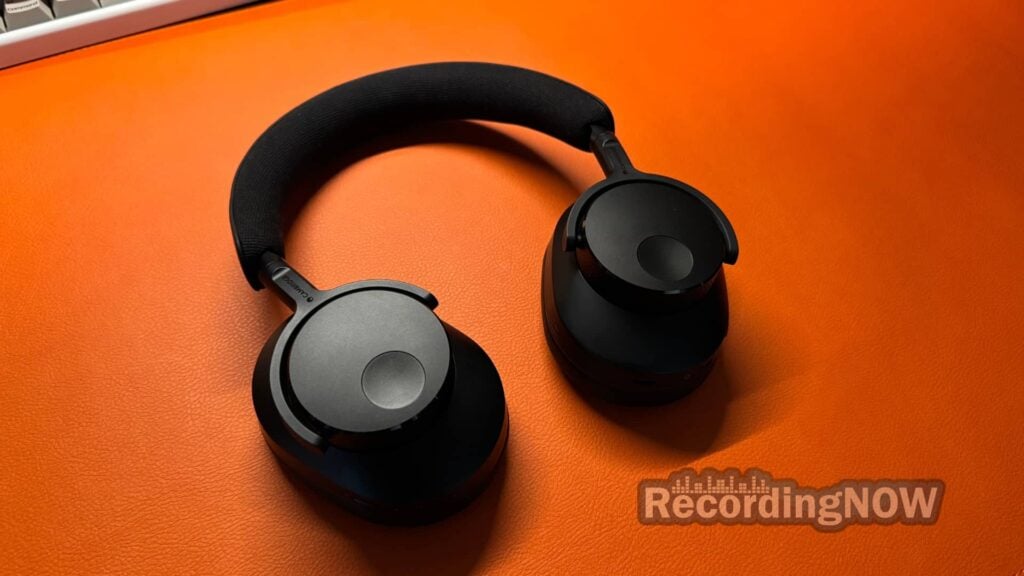
The Cambridge Audio Melomania P100 SE is currently one of the best sound quality per dollar in the wireless over-ear noise cancelling headphone class. The “SE” version has improved noise cancelling performance over the original P100. The cons are that it’s heavy and looks a bit silly when worn. Competes very well against Sony WH-1000XM6, Bose QuietComfort Ultra, Bowers & Wilkins Px7 S3, Bowers & Wilkins Px8, Apple AirPods Max, Sennheiser Momentum 4, and Bang & Olufsen Beoplay H95.
Watch this Full Review on YouTube!
Have any QUESTIONS for me?
Leave it in the YouTube COMMENTS and I’ll do my best to get back to you 🙂
Cambridge Audio Melomania P100 SE Pros and Cons
- Sound quality 3-4x its price
- Incredible value
- Up to 100 hours battery life
- Noise cancelling improved over P100
- Heavy
- Looks a bit silly when worn
Order Here for the LOWEST PRICE AVAILABLE (Do NOT pay retail):
Disclosure: These affiliate links may provide a discount and in return, give us a commission in order to keep this website 100% independent to ensure honest unfiltered reviews 🙂
Cambridge Audio Melomania P100 SE Sound Quality
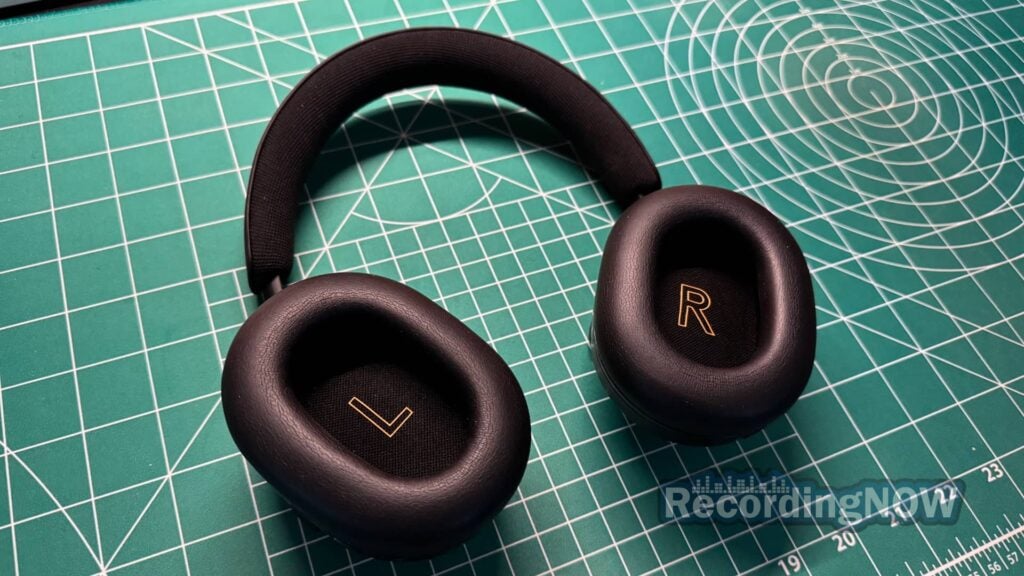
Stock sound first impressions…
Compared to the original P100, I was a bit surprised that the SE version has a different sound profile stock.
Stock is called “Flat” inside of the app, and I was slightly disappointed that the original P100 had a bit more clarity and balance, with the new SE version being noticeably LESS “flat”.
That said, I know that not everyone loved this neutral sound of the original P100, so making the move to a more consumer-friendly, bass-heavy sound profile from the factory is probably the right move.
This is also exacerbated by the new “DynamEQ” feature that maintains tonality by boosting bass and treble.
You put these two together, and we have a much more consumer-friendly sound out of the box.
The drawback to this is that I miss the immediate crispness and clarity with tamed and controlled bass of the original P100.
Now the good news is that, after applying EQ, I was immediately hearing the identical hardware from the original P100.
That is to say, the sound quality is all still there, thankfully.
Besides, the REAL reason you get the P100 is not for its stock sound, but its amazing responsiveness to EQ.
The Cambridge Audio app has a 7-band EQ that greatly impacts the sound, unlike other native EQs, and the P100 SE takes EQ very, very well.
My only critique of the EQ is that there isn’t clear increments or steps, so you’ll just need to eyeball the settings below.
So, I’ll be sharing my best EQ settings below, and conduct the rest of this review using these settings…
Best Equalizer (EQ) Settings for Cambridge Audio Melomania P100 SE
V1 – Mainly for Pop, Hip Hop
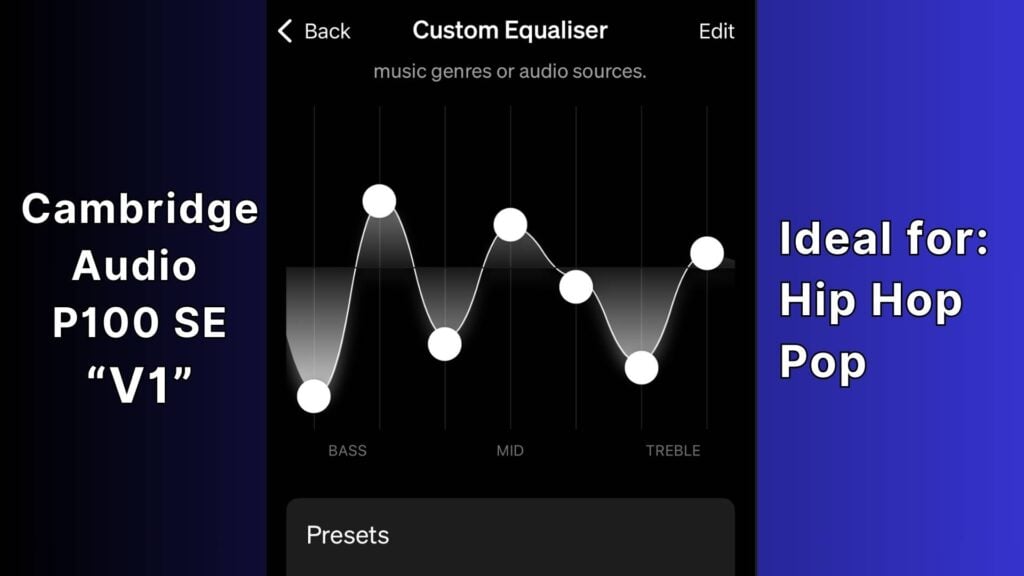
V2 – Mainly for Rock, Metal

Result: More bass and lower mid response to create a fuller sound. More exciting and consumer-friendly sound versus the stock flat sound. Little bit more lively up top without being sibilant or harsh.
Sound Quality after EQ…
Let me start by saying that I already greatly enjoy the stock “flat” sound of the P100, and if the EQ weren’t to be effective, it wouldn’t even matter to me.
That said, the P100 takes EQ very well, which is a sign that we’re dealing with some quality hardware under the hood.
In my mind, what the P100 “needs” most is to be a bit less flat and more exciting for the average consumer. Not everyone is the biggest fan of that neutral sound.
EQ is able to fill out the lower mids and amp up the bass a bit more, while still retaining that beautiful treble detail and sense of space with its large soundstage.
The end result is a great-sounding headphone sounding even better.
Let’s do some sound comparisons versus its competitors and wrap up final thoughts below…
vs Cambridge Audio Melomania P100 (Original Non-SE Version)
These have different sound profiles stock and depending on settings, but to my ear, the same identical hardware after applying some EQ.
I’ve found the best sound quality for both headphones to be with ANC turned ON, and the SE version seems a bit more consumer-friendly stock, especially with “DynamEQ” boosting the bass and treble even further.
Personally, I actually prefer the more detailed and less bassy non-SE P100 stock.
The new SE version comes off a bit more muffled with less crisp clarity and controlled bass in “Flat” mode compared to the original.
Thankfully, after EQ’ing the new SE, I’m hearing the old familiar P100 hardware – reinforcing the idea this is the same headphone after all.
All of this being said, most consumers and casual listeners likely will prefer the new consumer-friendly, bass-heavy sound of the SE version, on account of not everyone loving the stock P100 like I do.
SE version or not, the P100 has always been very responsive to EQ with one of the most flexible native EQ built right into the app (only outdone by the new Nothing Headphone 1’s EQ).
So these can be whatever you want them to be!
vs Sony WH-1000XM6
Immediately more open and spacious soundstage vs the XM6, which sounds very upfront in comparison.
The P100 has better separation, layering, and depth.
XM6 is not as detailed or crisp, but is warmer and slightly fuller with its bass and lower mids.
Overall, the P100 is in a tier above the XM6 and is noticeably more audiophile.
vs Bowers and Wilkins Px7 S3
This comparison is closer than the XM6 in terms of pure sound quality.
The Px7 S3 is noticeably V-shaped in its response, and is more consumer-friendly out of the box.
The P100 is more neutral and balanced, with a bigger soundstage and better spacing and depth versus the Px7 S3.
Both are nicely detailed with solid separation and layering, but the P100 seems to have the edge due to a larger soundstage overall. Very impressive.
Px7 S3’s bass seems more impactful and fuller, while the P100’s bass is cleaner and focused more on really low sub-bass response.
Honestly, I think the P100 is higher sound quality as a whole, but many may prefer the V-shape of the Px7 S3.
vs Bowers and Wilkins Px8
The Px8’s warm, lush sound profile is quite contrasting to the neutral bright P100.
I think the P100 is more versatile as a whole, and has a bigger soundstage.
The Px8 really excels for older and acoustic music where timbre is prioritized, but it has a tendency to fall flat on modern music.
The bass and treble is much better on the P100, but the mids (especially lower mids) are rich and filled out nicely with the Px8.
vs Apple AirPods Max
The APM has the most similar sound profile to the P100, with its detailed treble and present bass.
AirPods Max’s separation and layering continues to impress me for its age, but the P100 can match it, and then some.
I’m hearing just a bit more detail and resolution with the P100. Also better dynamics.
The P100 has more impactful sub-bass response, it goes down to the lowest frequencies with a bit more “oomph”. But the APM has more mid/upper bass punch, especially stock vs stock.
The soundstage is only slightly bigger with more depth on the P100, it’s closer than others.
I think the X factor is the Cambridge Audio’s very effective EQ that gives more flexibility over the APM, that doesn’t have a native custom EQ.
vs Bose QuietComfort Ultra (with V2 EQ)
Surprisingly close in detail and tonality versus the P100.
P100 sounds less “compressed” with higher resolution overall, and better dynamics.
But if you listen back to back, they actually sound very similar in sound profile and detail.
The bass is overall fuller and deeper on the P100 with a bit more slam and quantity, but I’m actually pleasantly surprised by the QC Ultra’s bass.
vs Sennheiser Momentum 4 (with V2 EQ)
The Momentum 4, especially after EQ, is one of the closer matches for the audiophile technicalities like dynamics and soundstage.
Surprisingly, the P100 soundstage is still slightly larger with better spacing.
I’m hearing a bit more detail on the P100, with slightly crisper dynamics.
The bass sounds tighter and cleaner on the P100, but both are fun to listen to in this department with plenty of sub-bass in each.
This one is fairly close, and I genuinely still enjoy listening to the Momentum 4 with V2 EQ whenever given the chance.
One more note, the P100 takes EQ better than the Momentum 4 as a whole, which to me is a sign of slightly superior hardware.
vs Focal Bathys
When I was first reading up on the P100, there were comparisons to the Focal Bathys, with some people even saying the P100 was superior in sound quality.
I was immediately skeptical. Bathys sound quality for almost a third of the price?
After listening to both back to back, I’ll say that these two are indeed in the same tier of sound quality, which means they’re at the top of the sub-$1,000 noise-cancelling headphone class.
Immediately, the stock Bathys sounds fuller, but slightly warmer and more muffled compared to the very revealing and brighter P100.
There is a slight veil over the Bathys, but the bass and mids are fuller and smoother.
The treble on the P100 is very impressive, as its smoother and slightly more detailed.
Soundstage has been an advantage for the P100 thus far, but the Bathys is slightly larger and more spacious. The Bathys has great spacing between instruments and vocals.
I prefer the punchier and more impactful bass of the Bathys, but the P100 seems to have the deeper sub-bass.
This one is close, but the Bathys still edges out the P100 overall and is more engaging and FUN to listen to for me personally.
(In fact, I forgot I was comparing the headphones and kept listening to the Bathys, lol.)
vs Bang & Olufsen Beoplay H95
Next to the Focal Bathys, the Bang & Olufsen H95 is at the top of the food chain for sound quality in this class of headphones.
Now, the H95 is much more similar to the P100’s sound profile, with tons of resolving treble detail, matched with plenty of deep sub-bass.
I’m hearing less of that “veil” of the Bathys, as the H95 is a brighter headphone with more recessed mids.
The H95 sounds a little less balanced, but perhaps a bit more exciting and consumer-friendly, stock vs stock.
These are both at the top when it comes to those revealing details, but the H95’s treble is a little harsher and tinnier at times.
This is really, really close.
I think I still lean very slightly towards the H95 as its more engaging and fun to listen to, as with the Bathys.
Overall thoughts on sound quality…
After putting the P100 through its paces and listening back to back against some very tough competition, I’m walking away very impressed.
It’s got what I’m looking for in a headphone: big soundstage (for a closed-back), spacing, excellent dynamics, treble detail without sibilance, and enough bass response to still be fun and consumer-friendly.
Combine that with a very useful and effective EQ, and the P100 can almost do no wrong.
I think the P100 is firmly in the top 3 for pure sound quality.
Sound Quality Score: 9.3 out of 10 (after EQ)
Cambridge Audio Melomania P100 Comfort
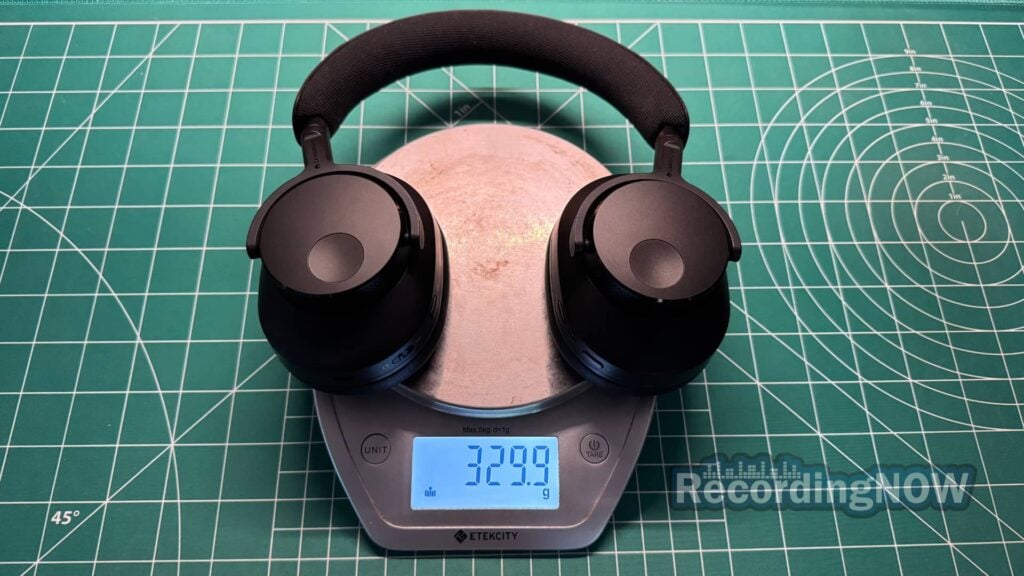
The Cambridge Audio P100 SE is one of the heaviest in this class, as weighed on my scale:
- Bose QuietComfort – 236.1 grams
- Sony WH-1000XM5 – 245.9 grams
- Sony WH-1000XM4 – 251.6 grams
- Sony WH-1000XM6 – 252.8 grams
- Bose QuietComfort Ultra – 254.4 grams
- Beats Studio Pro – 268.6 grams
- Sennheiser Momentum 4 – 292.9 grams
- Bowers and Wilkins Px7 S3 – 298.3 grams
- Bowers and Wilkins Px7 S2e – 305.2 grams
- Sonos Ace – 318.1 grams
- Bowers & Wilkins Px8 – 320.1 grams
- Bang & Olufsen H95 – 323 grams
- Cambridge Audio Melomania P100 SE – 329.9 grams
- Focal Bathys – 350 grams
- Apple AirPods Max – 387.8 grams
The new “SE” version boasts an improved headband, but honestly, I don’t notice the difference at all when worn.
If you didn’t tell me the headband was different, I would actually assume it was the same as the original P100.
I would say the P100 SE is actually decently comfortable for its weight, which I estimated to be less than what the scale eventually showed.
The main issue is that the headband cushion is kinda tough and barely has any give.
Combine that with the weight being one of the heaviest in this class, and that’s my main complaint.
The earcups are nice and spacious on the inside, and my ears aren’t really touching the inside, which is always appreciated.
Clamping force is not bad, but it’s the extra weight that makes these feel bulkier than I’d like.
Comfort Score: 4.0 out of 5
Features / Build Quality / Battery Life / Noise Cancelling
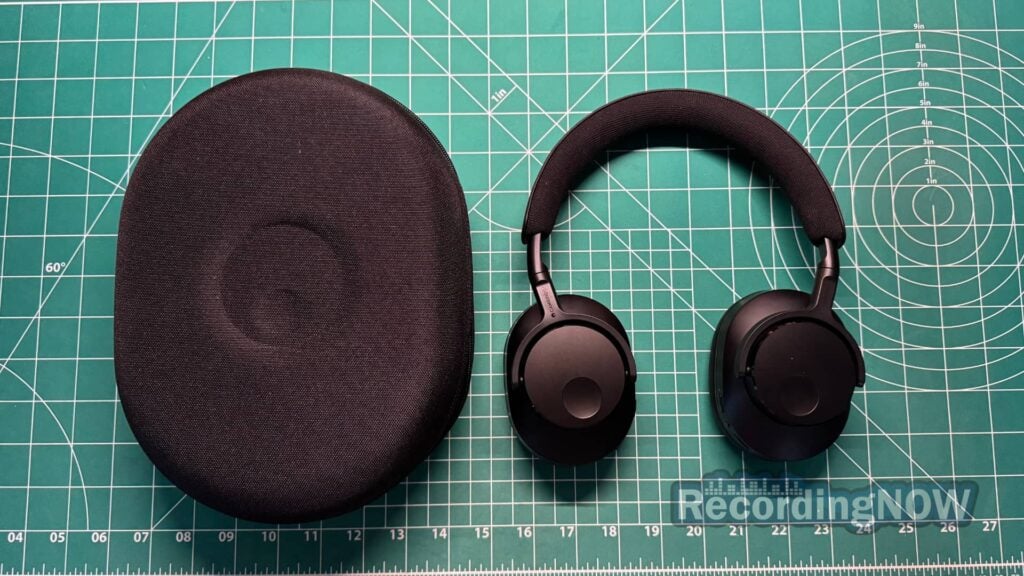
Features
The Cambridge Audio Melomania P100 was released in July 2024 and has many modern wireless ANC headphone features:
- Multiple built-in microphones for taking calls
- Bluetooth 5.3 with aptX Lossless, aptX Adaptive Audio
- Multi-point connection (Can’t choose which devices via app)
- “DynamEQ” (new for SE version): Maintains tonality at all volumes by increasing bass/treble
- Active Noise Cancelling (3 levels)
- Transparency Mode
- Ability to turn either mode OFF
- Wear Detection with Automatic Play/Pause
- “Gaming Mode” for slightly less latency (still some latency)
- Companion Smartphone app to customize EQ, settings, and update firmware
- 7-band EQ
- User-Replaceable battery
- Includes a large-sized premium Hard Shell case
- USB-C to USB-C charging cable
- USB-C to stereo cable
Cambridge Audio Melomania P100 SE Build Quality
Considering its price, the P100 SE has some of the better build quality in this class.
Reminds me very much of Bowers & Wilkins Px7 S3, with metal on the earcups, nice leather cushions on headband and earpads, then some plastic on hinges.
There’s a fabric material on the headband cushion that I’m not that fond of.
I do sometimes hear some slight creaking when wearing the headphones and moving around a bit, but it’s fairly minor.
Cambridge Audio Melomania P100 SE Battery Life
The P100 is rated at 60 hours (ANC on) and 100 hours (ANC off) of battery life on a single charge, which is currently close to the top of the class.
- Marshall Monitor III – 70 hours (ANC on), 100 hours (ANC off)
- Cambridge Audio Melomania P100 SE – 60 hours (ANC on), 100 hours (ANC off)
- Sennheiser Momentum 4 – 60 hours
- Sony WH-1000XM6 – 40 hours (ANC off), 30 hours (ANC on)
- Sony WH-1000XM5 and WH-1000XM4 – 30 hours
- Bowers & Wilkins Px7 S3 and Px8 – 30 hours
- Sonos Ace – 30 hours
- Bose QuietComfort Ultra – 24 hours
- AirPods Max – 20 hours
In my testing, I found this figure to be accurate.
This is very impressive, combined with the fact that the battery is meant to be user-replaceable, which is a nice touch from Cambridge Audio to make these a more consumer-friendly product versus others.
Cambridge Audio Melomania P100 SE Noise Cancelling Performance
Now here is the main selling point and reason to upgrade from the non-SE original P100, in my opinion.
The active noise cancelling seems to have been significantly improved in effectiveness on the SE version over the P100.
I have both headphones here, tested back to back, and the new SE is filtering out more frequencies with greater strength.
So although the sound quality is the same (thankfully), the ANC is a step up, as the original P100’s noise cancelling was its weakest aspect aside from maybe comfort.
Having also been testing Cambridge Audio’s M100 earbuds, I’d say they have some of the more impressive noise cancelling available.
That said, I’d put the ANC still below the elite options from Sony, Bose, AirPods Max, and Sonos Ace.
But it’s getting there, and this is a VERY welcome improvement, enough to bump up this category’s score.
Features / Build Quality / Battery Life / Noise Cancelling Performance Score: 4.5 out of 5
Value

The P100 SE retails at $299 USD and is still available at that price as it’s brand new.
Without a doubt, this is easily one of the best sound quality per dollar values in the over-ear wireless ANC headphone class.
I don’t often give out perfect 5 out of 5 “Value” scores, but if there’s a headphone that deserves it, it’s the P100 which competes with headphones costing 3-4 times as much, like the Focal Bathys and Bang & Olufsen H95.
That said, it mainly receives this score due to its stellar sound quality, but now has improved ANC over the non-SE version.
Comfort still remains in need of improvement, but the benefits heavily outweigh the cons here.
Value Score: 5 out of 5
Overall Scoring Breakdown
Sound Quality: 9.3 / 10 (after EQ)
Comfort: 4.0 / 5
Features / Build Quality / Battery Life / Noise Cancelling: 4.5 / 5
Value: 5 / 5
Total: 22.8 / 25
Is the Cambridge Audio Melomania P100 SE WORTH IT?
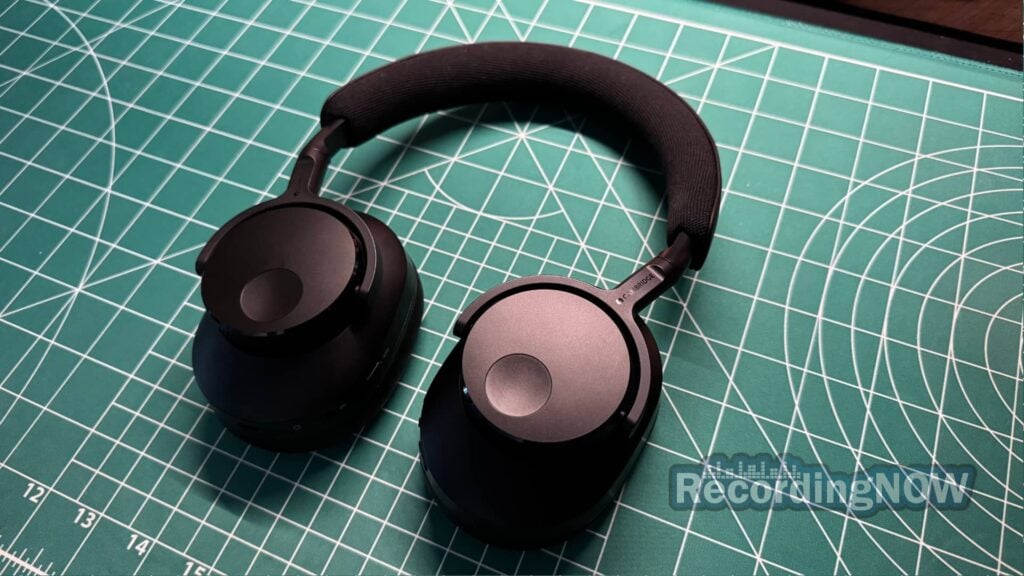
Being one of the rare recipients of a perfect “Value” score, the Cambridge Audio Melomania P100 is worth every penny, and then some.
I must note here that this headphone is really all about its audiophile-level sound quality rivaling headphones costing 3-4 times as much, but is not a perfect noise cancelling headphone as a whole.
The main drawbacks you must be aware of are that it’s rather heavy, below average noise cancelling, and looks goofy when worn due to a very wide headband look.
If you’re okay with all of the above, then the P100 is simply one of the best value deals in audio currently available today.
For the truly discerning audiophile, I still get more enjoyment from listening to the Focal Bathys, but it’s a toss-up between the Bang & Olufsen H95 and the P100 right after.
Some very Strong Alternatives in this class of noise cancelling headphones are:
- Sony WH-1000XM6
- Bowers & Wilkins Px7 S3
- Bose QuietComfort Ultra
- Bowers & Wilkins Px8
- Bowers & Wilkins Px7 S2e
- Bang & Olufsen Beoplay H95
- Apple AirPods Max
- Sennheiser Momentum 4
- Sony WH-1000XM5
- Bose QuietComfort (2023 model)
- Beats Studio Pro
Some Relevant Comparisons in this class of noise cancelling headphones are:
- Sennheiser Momentum 4 vs Bose QuietComfort Ultra
- Bose QuietComfort Ultra vs Apple AirPods Max
- Bose QuietComfort Ultra vs Sony WH-1000XM5
- Sennheiser Momentum 4 vs Sony WH-1000XM5
- Sennheiser Momentum 4 vs AirPods Max
- Sonos Ace vs AirPods Max
I highly recommend you check those out next!
Lastly, if you’d like to save some money and keep supporting RecordingNOW.com’s 100% independent, unbiased reviews, do consider using some of our affiliate links below to shop and even just compare prices. We purchase all products we review with our own money to maintain the highest level of integrity, and your support goes into that plus a continuously improving site experience.
Order Here for the LOWEST PRICE AVAILABLE (Do NOT pay retail):
Disclosure: These affiliate links may provide a discount and in return, give us a commission in order to keep this website 100% independent to ensure honest unfiltered reviews 🙂
How We Tested and Our Methodology
RecordingNOW.com is a 100% independent publisher with over 10 years of experience testing and reviewing consumer electronics and headphones.
We currently purchase EVERY product we test with our own money, and are not paid by any company or manufacturer to influence our opinions or decisions.
After purchasing the product, we conduct up to hundreds of hours of detailed hands-on testing in a controlled, acoustically-treated environment.
ODi Productions is our resident expert and author of this article, with 10 years of experience as a professional music producer, tech journalist, and audiophile.
Read Next

Bose QuietComfort Ultra Review


Bowers and Wilkins Px7 S2e Review


Sennheiser Momentum 4 Headphone Review
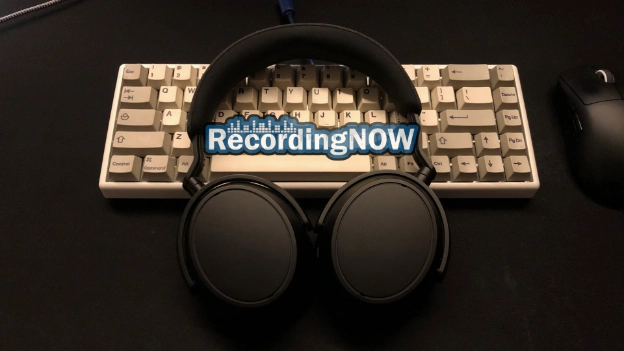
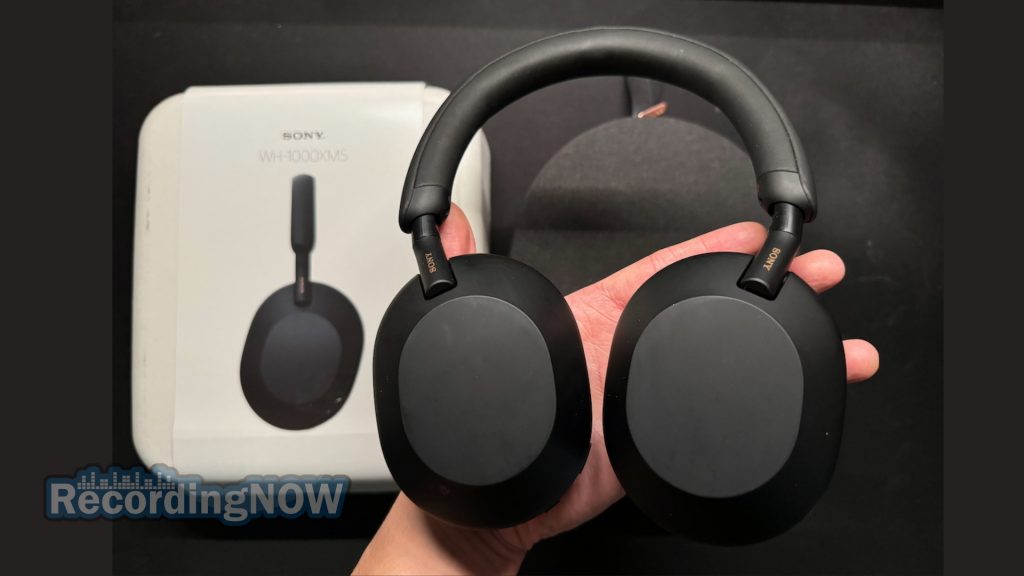

Bose QuietComfort Review (2023 Model)
